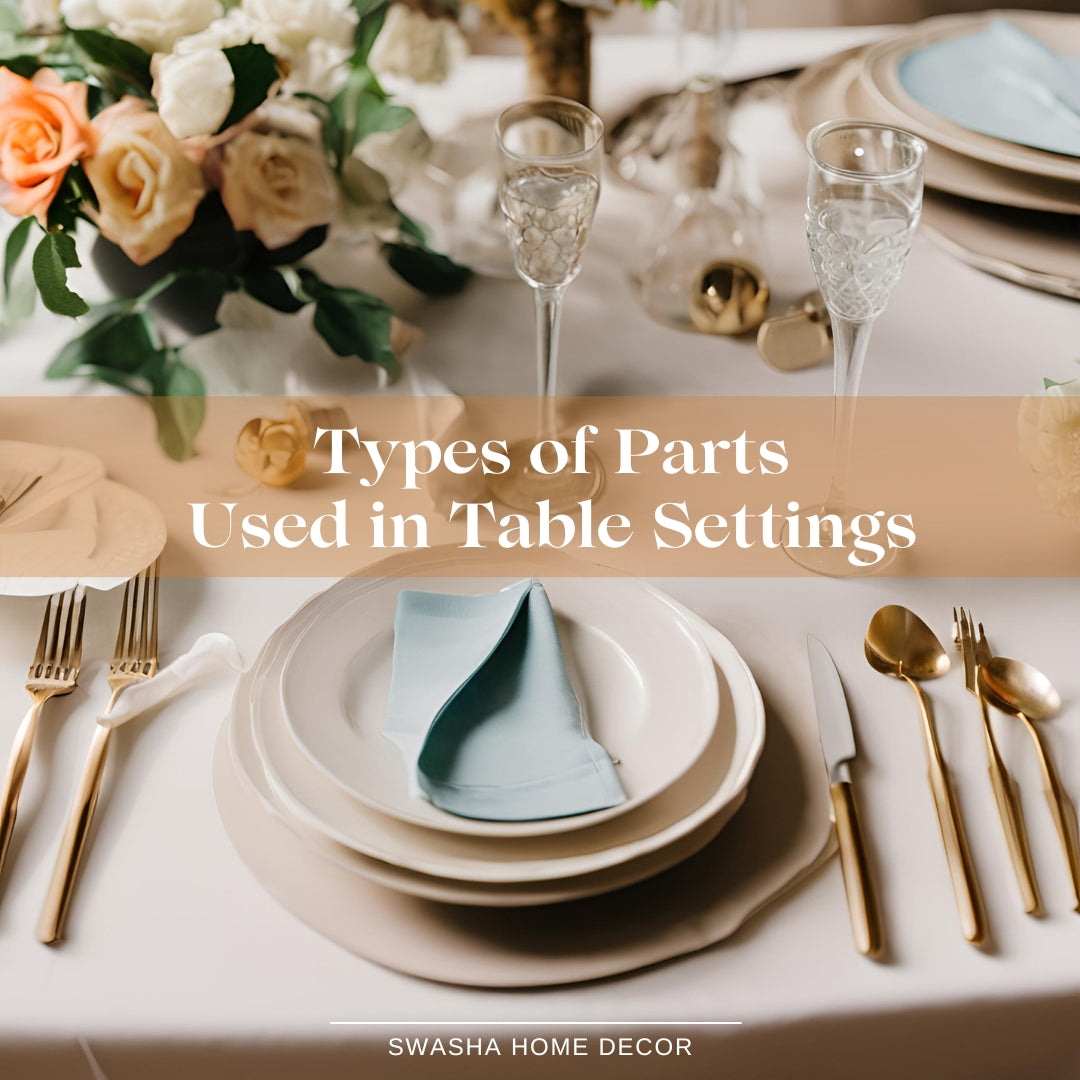
Understanding the Essential Types of Parts Used in Table Settings
Share
Creating an inviting and functional table setting is an art that enhances dining experiences, whether for everyday meals or special occasions. From the elegance of fine china to the practicality of everyday utensils, understanding the different parts used in table settings can elevate your dining decor and etiquette. Here's a comprehensive guide to the essential components of table settings.
1. Plates
Plates are the cornerstone of any table setting. They come in various sizes and types, each serving a specific purpose:
- Dinner Plates: Typically 10-12 inches in diameter, used for the main course.
- Salad Plates: Smaller, about 7-9 inches, for salads or appetizers.
- Bread Plates: Even smaller, around 6 inches, for bread and butter.
- Charger Plates: Decorative base plates that sit under dinner plates, adding elegance and protecting tablecloths.
2. Cutlery
Cutlery, or silverware, is essential for a functional table setting. Each piece has its role:
- Dinner Knife and Fork: Used for the main course.
- Salad Fork: Smaller than a dinner fork, used for salads and appetizers.
- Dessert Spoon and Fork: For desserts, often placed above the plate.
- Butter Knife: For spreading butter, typically found with the bread plate.
- Soup Spoon: Rounder and larger than other spoons, used for soups.
3. Glassware
The right glassware can enhance the taste and experience of beverages:
- Water Glass: Larger, for water or non-alcoholic drinks.
- Wine Glasses: Red wine glasses have a wider bowl, while white wine glasses are more slender.
- Champagne Flutes: Tall and narrow to preserve carbonation.
- Cocktail Glasses: Vary in shape, used for cocktails.
4. Napkins and Napkin Rings

Napkins are both functional and decorative. They can be cloth or paper and are often complemented by napkin rings to add a touch of sophistication.
5. Centerpieces

Centerpieces set the mood and theme of the table. They can range from simple flower arrangements to elaborate displays, depending on the occasion.
6. Table Linens
Table linens include tablecloths, runners, and placemats. They protect the table and add to the decor:

- Tablecloths: Cover the entire table, providing a base for the setting.
- Runners: Narrower than tablecloths, run down the center of the table.
- Placemats: Define individual place settings, adding a layer of protection and style.
7. Serving Dishes
Serving dishes hold and present the food. They come in various forms, including:
- Platters: Large, flat dishes for presenting main courses or appetizers.
- Bowls: For salads, soups, and side dishes.
- Gravy Boats: For sauces and gravies.
8. Decorative Elements
Additional decorative elements can personalize and enhance the table setting:

- Candles: Add ambiance and warmth.
- Place Cards: Designate seating arrangements, useful for formal dinners.
- Seasonal Decorations: Reflect the occasion or holiday being celebrated.
Conclusion
A well-thought-out table setting not only showcases your style but also enhances the dining experience for your guests. By understanding the various parts and their uses, you can create a table setting that is both beautiful and functional. Whether you’re hosting a formal dinner or a casual get-together, the right table setting can make all the difference.
By incorporating these elements into your table settings, you can transform any meal into a memorable event. Happy dining!



